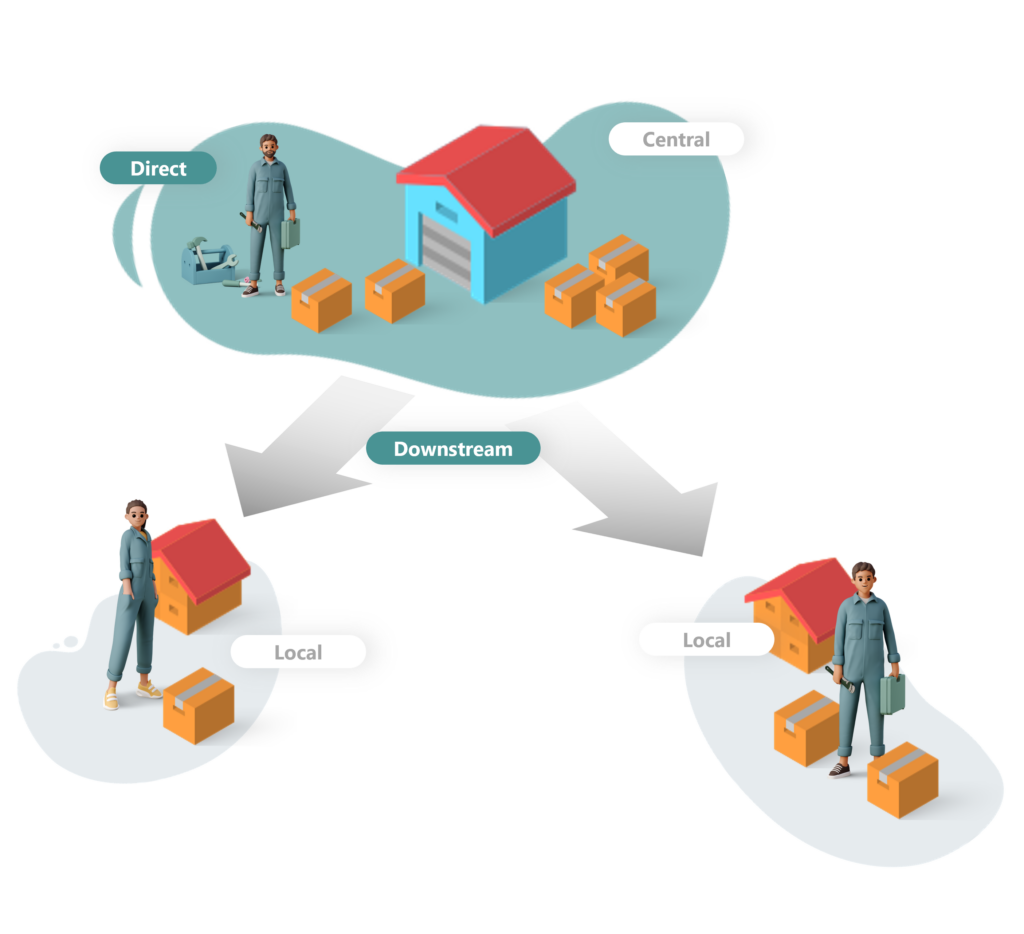Solutions
Optimize your network of stocks
By treating your (global) network as 1 system even more synergies can be gained. Balance your local stock (close to your customer) and your central stock (still flexible to distribute), and score high on customer service while lowering your total stock. The algorithm that takes care of this optimization is called Multi-Echelon Optimization (MEO).


Balance local and central stock
Whether you must deliver customer service or you want to boost your parts sales, stock that is close to your customer always pays off. However, certainly for global networks, this strategy can be costly in terms of stock value. In general, the more local you stock the more costly it gets.
Balancing local and central stock, and all its dependencies, is a complex and tedious task. You want to strike the best balance between customer service and stock value. Lanza offers that solution.
Combine direct and downstream demand
Since we are dealing with (global) networks of stocks, different demand streams come into play. We distinguish between direct and downstream demand. Direct demand is end client demand on a certain location, where downstream demand is the requirement of parts on a downstream location for its parent.
Our MEO algorithm takes both demand streams into account and makes sure that the service for the end customer is optimized, taking the total stock value into account.









